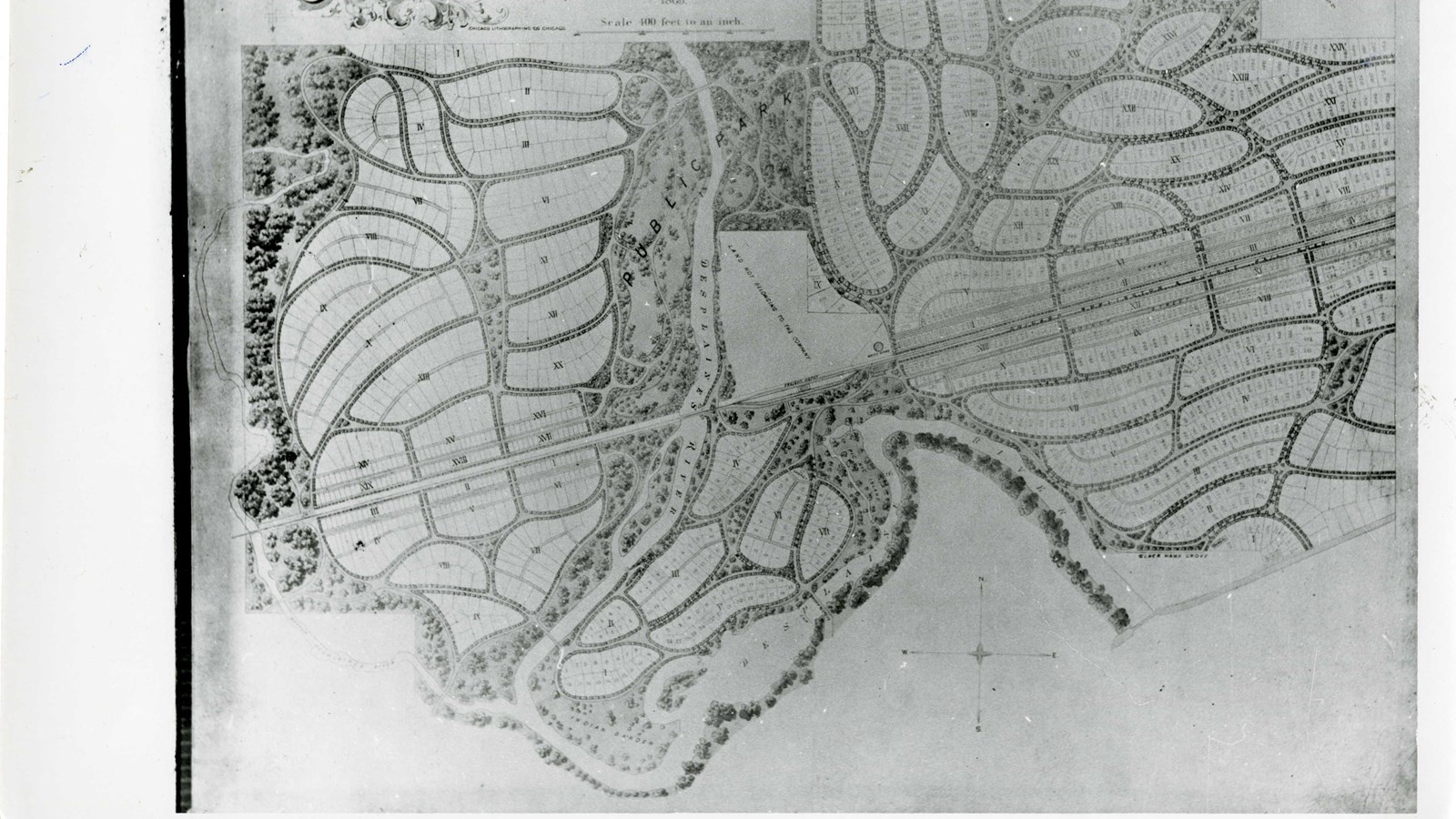Last updated: June 11, 2024
Place
Riverside

Olmsted Archives
Quick Facts
In 1868, Frederick Law Olmsted and Calvert Vaux were commissioned to plan a unique, 1,600-acre community west of Chicago, dubbed Riverside. The goal at Riverside was to remove residents from the stresses of modern urban life as much as possible, allowing them to live in close harmony with nature while still retaining modern conveniences, such as a twenty-minute train ride to downtown Chicago.
Riverside’s gently curving streets can be disorienting if you’re accustomed to the standard rectangular grid, and there are no square corners and no cul-de-sacs in the entire community. Olmsted prescribed well-built, well-drained roads with carefully curved lines and generous plantings in the hopes of creating an attractive and highly functional public grounds for rest and recreation.
Respecting family privacy, Olmsted’s design facilitated interaction between neighbors by providing informal parks and playgrounds, as well as areas for strolling, boating, and other recreational activities. Unfortunately, the combination of the Chicago Fire of 1871 and a financial panic in 1873 ended the flow of funds and led to bankruptcy of the Riverside Improvement Company. Olmsted and Vaux both resigned over fee disputes, though they provided the village with a solid plan and infrastructure to build on.
Source: "Riverside-IL," The Cultural Landscape Foundation
For more information and primary resources, please visit:
Olmsted Research Guide Online
Olmsted Archives on Flickr
Olmsted Online
Riverside’s gently curving streets can be disorienting if you’re accustomed to the standard rectangular grid, and there are no square corners and no cul-de-sacs in the entire community. Olmsted prescribed well-built, well-drained roads with carefully curved lines and generous plantings in the hopes of creating an attractive and highly functional public grounds for rest and recreation.
Respecting family privacy, Olmsted’s design facilitated interaction between neighbors by providing informal parks and playgrounds, as well as areas for strolling, boating, and other recreational activities. Unfortunately, the combination of the Chicago Fire of 1871 and a financial panic in 1873 ended the flow of funds and led to bankruptcy of the Riverside Improvement Company. Olmsted and Vaux both resigned over fee disputes, though they provided the village with a solid plan and infrastructure to build on.
Source: "Riverside-IL," The Cultural Landscape Foundation
For more information and primary resources, please visit:
Olmsted Research Guide Online
Olmsted Archives on Flickr
Olmsted Online
